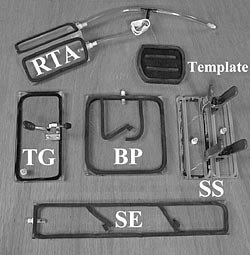Question
I am going to be cutting parts on a CNC router out of solid phenolic paper sheet. Thickness will range from 1/4" to 1/2". I will be machining over 150,000 feet of cut line over the life of the project with a 1/2" tool. I would like to get some input on tooling, feed rates, and any tricks that might come in handy.
Forum Responses
I routed Phenolic awhile back. I made some templates for overhead routers. I use insert tooling whenever I can. I routed the phenolic with a standard single flute 1/2 insert without any problems whatsoever. It was 1/2 inch thick and I slowed my rate way down, then just kept easing it up until I was comfortable that I wasn't pressing the bit or machine but still wasn't overheating the bit.
I think the advantage of inserts are that a dull insert can be changed in seconds and the program can be run immediately without recalibrating the bit. Collets don't wear as fast because the bit never leaves the collet, and once you're past the intial investments the cutters are relatively cheap, and diameters always stay true.
Disadvantages are they are not very good at plunge cutting, go slow and ramp on the infeed, and feed rates will be slower then spirals due to the straight cutters. I had no problems with cutting phenolic with them. When they got dull, I simply popped out the cone, loosened two screws and turned the cutter over, replaced the cone and went back to cutting.
The "trick" to cutting phenolic is to make chips, not dust. When you make a lot of dust it's a signal that the cutter is doing a lot of rubbing. That rubbing is doing nothing but wearing the edge of the cutter, and once you wear that "razor edge" off of the carbide it starts to wear at an excellerated rate. So the answer is to slow the spindle down and increase the feed rate. This sounds a little "backwards", but if the spindle speed is too high you are going to get too low a tooth load (not enough material cut per tooth per rev.) and too much rubbing.
Here are a few things you should do. Make your setup with some extra depth to it, that way you can use all of the flute length availible on the cutter. Write a second, third, fourth, etc program and simply use your resharpended cutters (or use cutter comp. if you have it). Don't spend money on "quality" cutters--quite honestly you won't see any difference in their life. You will get more done with 10 $27.95 1/2" dia carbide spiral flute router bits than with a lesser number of "quality" tools.
I'm not in the woodworking business, but in the plastics business, and in the last 30+ years I have machined literaly tons of Phenolics (all of the different grades).
Comment from contributor A:
I cut phenolic resin all the time with CNC routers. We use a spiral carbide bit. The rule we were told was that the spindle RPM should be 18000 and the feed rate should be 250 in/min. This works well for us. We have 5 CNC routers that we cut this on.
